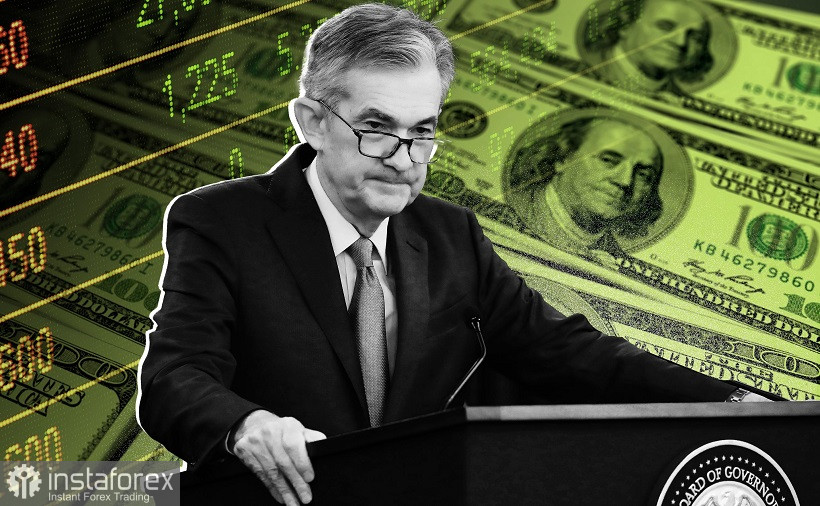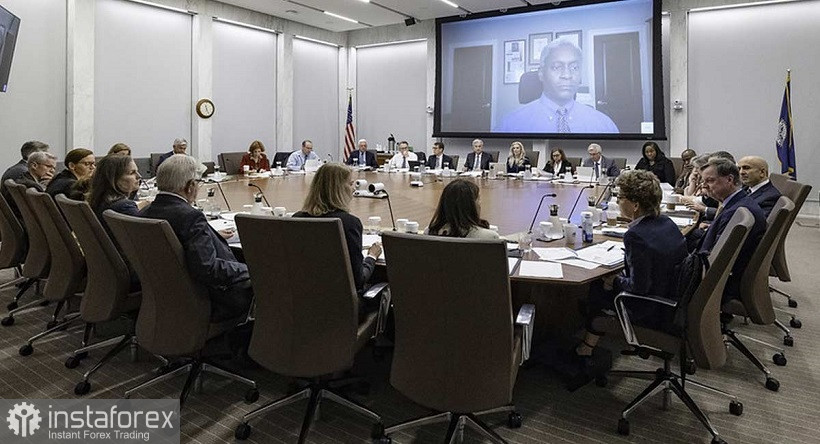Following the results of the June meeting, the US Federal Reserve implemented the most "hawkish" scenario by raising the interest rate by 75 basis points at once. On the eve of the June meeting, some currency strategists (in particular, banks such as Goldman Sachs and JP Morgan) stated that such a scenario was highly likely to materialize, but still, it was not "basic." Most analysts predicted a 50-point increase with a simultaneous tightening of rhetoric from the Fed, in particular, in the context of the announcement of a 75-point increase. But the Fed decided to act, as they say, right off the bat. Only one member of the Committee voted against this decision—Esther George, who was in favor of a 0.5% increase.

It is also necessary to understand here that the latest release of data on the growth of US inflation was published during the period of the "silence regime" (10-day period before the Fed meeting), during which the members of the regulator cannot comment on their position in the public plane. Therefore, the intrigue remained here until the last moment: how will the central bank react to the renewed growth of the consumer price index after the first signs of its slowdown?
As it turned out, the regulator is ready to fight high inflation even at the cost of a possible recession. This conclusion can be drawn based on the fact that the Fed's own economic forecasts assume a deterioration in the economic situation in the United States (slower GDP growth, rising inflation, and unemployment). But at the same time, Jerome Powell expressed his readiness to increase the interest rate at an active pace—he made it clear that at the next meeting in July, the central bank may resort to either a 50-point or 75-point increase.
Now we can say with confidence that the Fed will increase the rate at each meeting, at least until the end of this year (the option of a pause after the September round of increases was discussed earlier). The only question is how fast the central bank will tighten the parameters of monetary policy. The answer to this question lies in subsequent inflationary releases. At a press conference, Powell acknowledged that the central bank intended to keep the 50-point rate of increase "because it expected inflation to smooth out until then." But since inflationary data "surprised with a shift towards growth," the Fed decided to apply more aggressive countermeasures. It is obvious that further rate increases will depend on the dynamics of key inflation indicators—CPI and PCE.
At the same time, the head of the Fed made it clear that the parameters of monetary policy will be tightened, even despite the projected decline in key economic indicators. On the one hand, Powell assured the media that the US economy is "strong enough and well prepared to tighten monetary policy." On the other hand, the updated Fed forecasts, as well as some of Powell's own comments, suggest otherwise. For example, the head of the central bank acknowledged that maintaining the current parameters of a strong labor market in the absence of price stability "is not possible."
According to the updated forecasts, the estimated unemployment rate for 2022 is raised to 3.7% (from the previous value of 3.5%). The expected rate of economic growth in the United States for the current year has also been substantially revised: the forecast has been reduced to 1.7% (in March it was at the level of 2.8%). In addition, the fact that the regulator assumes a rate cut in two years (in 2024) suggests that the Fed expects a significant slowdown in economic growth.

However, despite all the obvious risks, the central bank does not intend to give up its intentions: the regulator will tighten its monetary policy at an aggressive pace, focusing on suppressing inflationary growth.
The EUR/USD pair reacted to the results of the June meeting in a corresponding way, dropping impulsively to the level of 1.0360. But as soon as the downward momentum began to fade, traders hurried to take profits, preventing the EUR/USD bears from approaching the support level of 1.0340 (5-year low). This is an important and, one might say, defining moment in the context of the development of the downward trend.
By and large, sellers of the pair approached a 5-year low with the prospect of testing 20-year price lows: in 2017, the low was fixed at around 1.0339, and the price was below this target in 2002. As you can see, many market participants do not risk moving below 1.0360 in order to overcome long-term price levels and go to the bottom of the 3rd figure. After all, we are already talking about a price territory that has been "uninhabited" since the beginning of the 2000s.
Therefore, in my opinion, the pair will fluctuate in the range of 1.0360–1.0490 (the upper line of the Bollinger Bands indicator, coinciding with the Kijun-sen line on the four-hour chart) in the medium term. Under the current conditions, longs look unambiguously risky, so it is advisable to open short positions to 1.0400 and 1.0360 in case of upward bursts. Against the backdrop of the slowness of the European Central Bank, the hawkish mood of the Fed clearly contrasts, so the dollar remains attractive, at least when paired with the single currency.





















